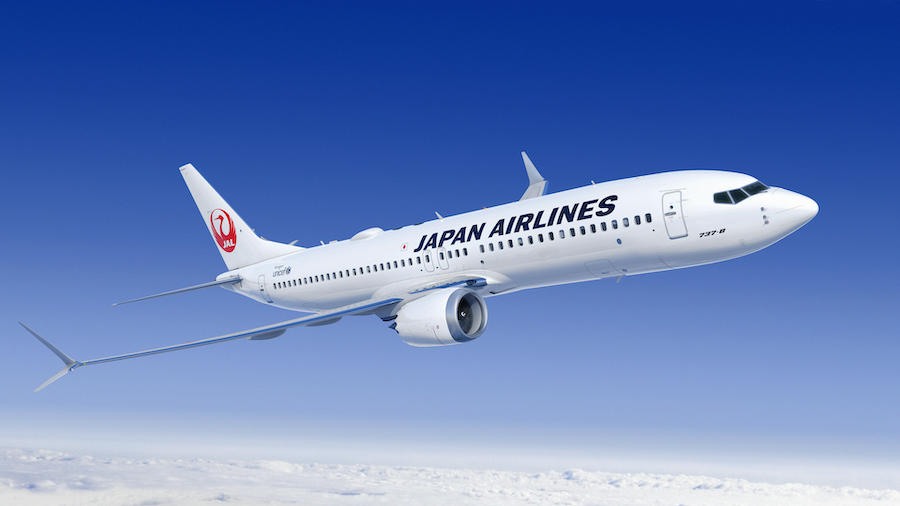Japan Airlines (JAL) has announced the purchase of 21 Boeing 737 MAX 8 (737-8) aircraft, which will begin operation in 2026. This will replace the current fleet of Boeing 737-800 aircraft, of which JAL owns 47 and leases 17, with the new model. The Boeing 737-8 aircraft has improved aerodynamic performance and new engines, which is estimated to reduce carbon dioxide (CO2) emissions by approximately 15% compared to the current Boeing 737-800 aircraft.
The aircraft is THE 737 MAX 8 aircraft caused the 2 fatal crashes due to the MCAS system, so personally I feel bit anxious about the aircraft, but for sure its more economical and environmentally choice.
JAL is committed to updating its fleet of aircraft for carbon neutrality by 2050. For larger planes, JAL has already begun replacing Boeing 777 planes with Airbus A350 planes. However, there are still about 90 planes in service that are one generation behind for medium and small planes. Therefore, JAL intends to update its fleet not only with these 21 aircraft but steadily in the future.
JAL’s carbon neutrality goals are the primary reason for upgrading its fleet to more fuel-efficient aircraft. In this regard, the new Boeing 737-8 aircraft is an ideal option for JAL.
Boeing 737 MAX Series Overview
The Boeing 737 MAX series is currently being operated by more than 50 airlines worldwide, with over 900 aircraft in service, accumulating over 1.4 million commercial flights and approximately 3.5 million flight hours since its launch in late 2020. The Boeing 737-8 aircraft that JAL is introducing is part of the 737 MAX series. It is equipped with a new, fuel-efficient LEAP-1B engine manufactured by CFM International and features advanced winglets, which improve aerodynamic performance, thereby reducing fuel consumption and CO2 emissions by approximately 15% compared to the Boeing 737-800 aircraft.
Issues with the Boeing 737 MAX Series
The Boeing 737 MAX series faced serious issues in the past, particularly with the automated flight control system known as the Maneuvering Characteristics Augmentation System (MCAS). On October 29, 2018, Lion Air Flight 610, a Boeing 737 MAX 8, crashed into the Java Sea off the coast of Indonesia, killing all 189 people on board. On March 10, 2019, Ethiopian Airlines Flight 302, also a Boeing 737 MAX 8, crashed shortly after takeoff, killing all 157 people on board. Investigations revealed that both crashes were caused by problems with the MCAS system, which was designed to automatically adjust the angle of the aircraft’s nose to avoid stalling. However, faulty sensor readings caused the MCAS system to activate repeatedly, forcing the nose of the aircraft down, and the pilots were unable to regain control.
The worldwide grounding of all Boeing 737 MAX aircraft followed these crashes, and the aircraft was only cleared to fly again after significant safety improvements were made to the MCAS system. These improvements included the addition of a second angle of attack sensor to provide redundancy, revisions to the MCAS software to limit its authority and prevent it from activating multiple times, and additional training for pilots on how to respond to MCAS malfunctions.
Safety Improvement after the Boeing 737 MAX Crashes
Following the Lion Air and Ethiopian Airlines crashes, Boeing and regulatory agencies worldwide undertook significant efforts to improve the safety of the 737 MAX series, particularly the MCAS system. Boeing has also made organizational changes to ensure that safety is prioritized in all aspects of the company, and the Federal Aviation Administration (FAA) has instituted new procedures for the certification of new aircraft. In addition, regulatory agencies worldwide have implemented more rigorous oversight of aircraft certification and are working to harmonize safety standards across the globe.
As a result of these efforts, the Boeing 737 MAX series was cleared to fly again in late 2020 after being grounded for almost two years. The aircraft has since resumed service with many airlines worldwide, including those in Japan.
It’s worth noting that the model of the Boeing 737 MAX involved in the Lion Air and Ethiopian Airlines crashes was the MAX 8, which is the same model that JAL is buying. However, as mentioned above, significant safety improvements have been made since then to address the issues with the MCAS system. Therefore, it is expected that the Boeing 737-8 aircraft that JAL is introducing will be safe to operate.
